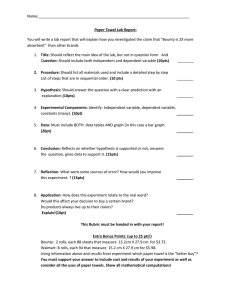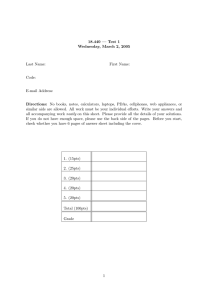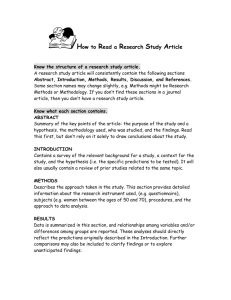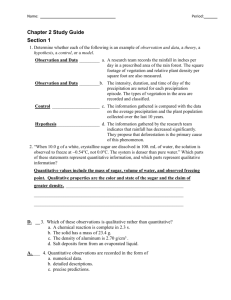Prelab: Do Purpose, hypothesis, materials, procedure
advertisement
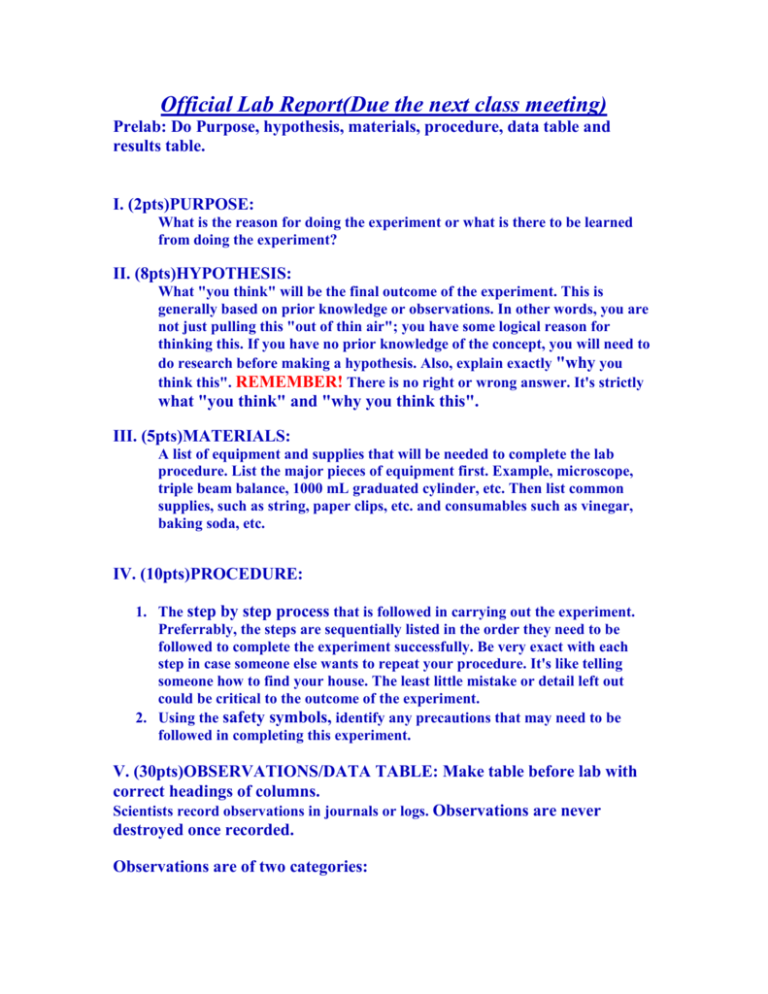
Official Lab Report(Due the next class meeting) Prelab: Do Purpose, hypothesis, materials, procedure, data table and results table. I. (2pts)PURPOSE: What is the reason for doing the experiment or what is there to be learned from doing the experiment? II. (8pts)HYPOTHESIS: What "you think" will be the final outcome of the experiment. This is generally based on prior knowledge or observations. In other words, you are not just pulling this "out of thin air"; you have some logical reason for thinking this. If you have no prior knowledge of the concept, you will need to do research before making a hypothesis. Also, explain exactly "why you think this". REMEMBER! There is no right or wrong answer. It's strictly what "you think" and "why you think this". III. (5pts)MATERIALS: A list of equipment and supplies that will be needed to complete the lab procedure. List the major pieces of equipment first. Example, microscope, triple beam balance, 1000 mL graduated cylinder, etc. Then list common supplies, such as string, paper clips, etc. and consumables such as vinegar, baking soda, etc. IV. (10pts)PROCEDURE: 1. The step by step process that is followed in carrying out the experiment. Preferrably, the steps are sequentially listed in the order they need to be followed to complete the experiment successfully. Be very exact with each step in case someone else wants to repeat your procedure. It's like telling someone how to find your house. The least little mistake or detail left out could be critical to the outcome of the experiment. 2. Using the safety symbols, identify any precautions that may need to be followed in completing this experiment. V. (30pts)OBSERVATIONS/DATA TABLE: Make table before lab with correct headings of columns. Scientists record observations in journals or logs. Observations are never destroyed once recorded. Observations are of two categories: Qualitative - information gathered through the senses such as smell, taste, touch, hear, shape, etc. Quantitative - information gathered due to precise measurements, such as height in cm, width in cm, mass in g, volume in cm3, density in g/cm3, time in seconds, speed in kmh, etc. VI. (15pts)CALCULATIONS Write the equation used and show all work for each calculation here VII. (15pts)RESULTS Make a table showing the answers from your calculations above. VIII. (20pts)Questions ( If there are questions copy and answer them here in complete sentences) Conclusion: Write a summary of what you did in the experiment and your results. Also, answer if your hypothesis was correct if applicable.
